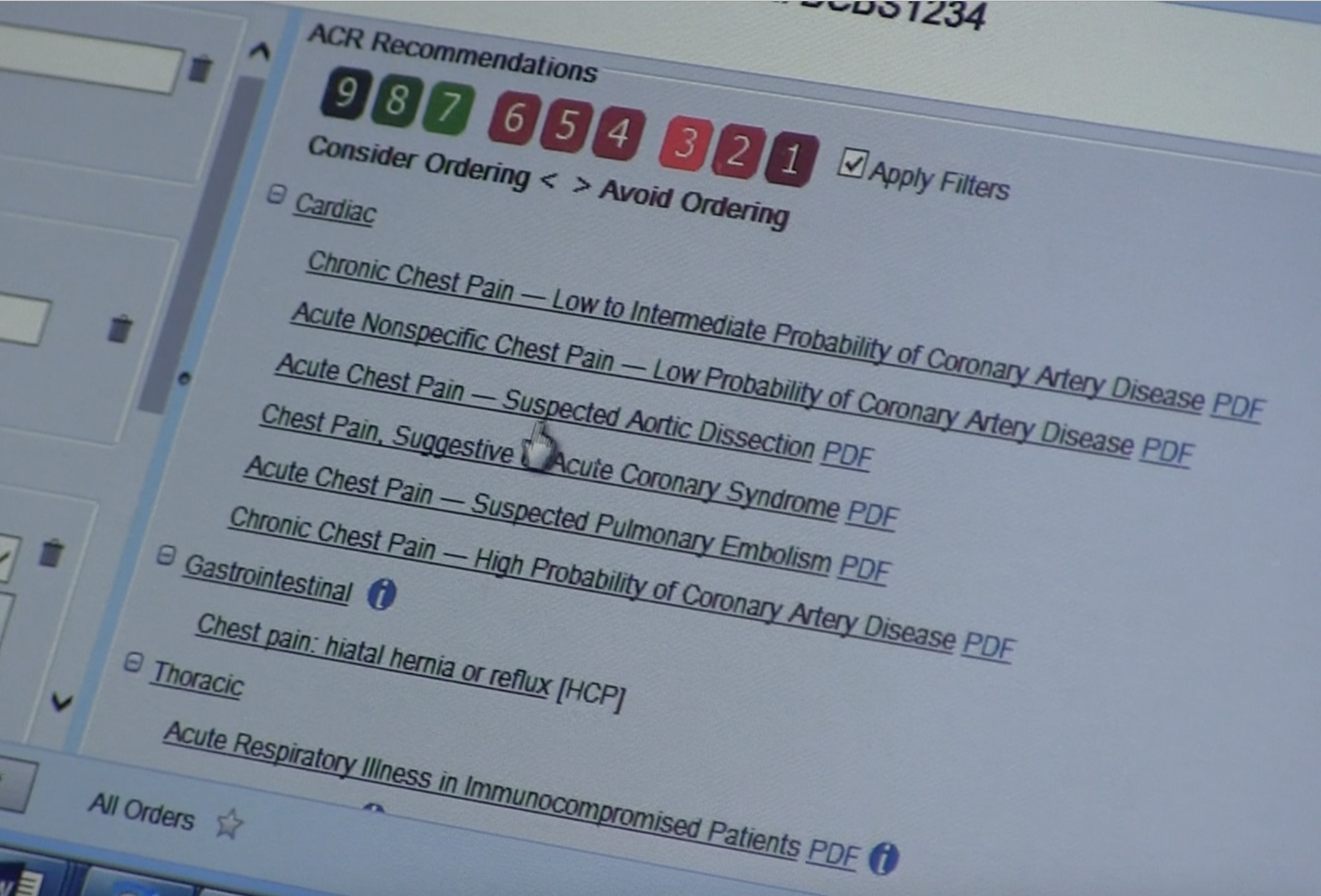
On July 12, the Centers for Medicare and Medicaid Services (CMS) released the proposed rule for the 2019 Physician Fee Schedule (PFS). This year’s proposed rule also includes updates to the Quality Payment Program and a few other items. You can find the proposed rule in its entirety here.
The primary Appropriate Use Criteria (AUC) section runs from pages 438 to 459. Here are a few quick takeaways:
1. The timeline for implementation remains unchanged. The voluntary period runs from July 2018 to December 2019. The program technically begins Jan. 1, 2020, but it will begin with an “educational and operations testing period” during which time CMS will continue to pay claims whether or not they correctly include AUC consultation information. On page 443 CMS writes:
"In the CY 2018 PFS final rule, we addressed the third major component of the Medicare AUC program – consultation with applicable AUC by the ordering professional and reporting of such consultations under section 1834(q)(4) of the Act. We established a Jan. 1, 2020 effective date for the AUC consultation and reporting requirements for this program. We also established a voluntary period during which early adopters can begin reporting limited consultation information on Medicare claims from July 2018 through December 2019. During the voluntary period there is no requirement for ordering professionals to consult AUC or furnishing professionals to report information related to the consultation. On Jan. 1, 2020, the program will begin with an educational and operations testing period and during this time we will continue to pay claims whether or not they correctly include AUC consultation information. Ordering professionals must consult specified applicable AUC through qualified CDSMs [clinical decision support mechanisms] for applicable imaging services furnished in an applicable setting, paid for under an applicable payment system and ordered on or after Jan. 1, 2020; and furnishing professionals must report the AUC consultation information on the Medicare claim for these services ordered on or after Jan. 1, 2020."
2. CMS is allowing auxiliary personnel incident to the ordering professional to consult the AUC through a qualified CDSM. On page 449 CMS writes:
"When the AUC consultation is not performed personally by the ordering professional, we propose the consultation may be performed by auxiliary personnel incident to the ordering physician or non-physician practitioner’s professional service. We believe this approach is appropriate under this program and still accomplishes the goal of promoting the use of AUC. This proposed policy would allow the ordering professional to exercise their discretion to delegate the performance of this consultation. It is important to note that the ordering professional is ultimately responsible for the consultation as their NPI is reported by the furnishing professional on the claim for the applicable imaging service; and that it is the ordering professional who could be identified as an outlier ordering professional and become subject to prior authorization based on their ordering pattern."
3. Despite abandoning this approach last year after considerable stakeholder pushback, CMS is re-proposing to use G-codes and modifiers to communicate required AUC information on a claim. On pages 451-452 CMS explains their rationale for this decision:
"In the CY 2018 PFS proposed rule (82 FR 34094), we discussed using a combination of G-codes and modifiers to report the AUC consultation information on the Medicare claim. We received numerous public comments objecting to this potential solution. In the 2018 PFS final rule, we agreed with many of the commenters that additional approaches to reporting AUC consultation information on Medicare claims should be considered, and we learned from many commenters that reporting a unique consultation identifier (UCI) would be a less burdensome and preferred approach. The UCI would include all the information required under section 1834(q)(4)(B) of the Act including an indication of AUC adherence, non-adherence and not applicable responses. Commenters noted that capturing a truly distinguishing UCI on the claim will allow for direct mapping from a single AUC consultation to embedded information within a CDSM. We indicated that we would work with stakeholders to further explore the concept of using a UCI to satisfy the requirements of section 1834(q)(4)(B) of the Act, which will be used for Medicare claims processing and, ultimately, for the identification of outlier ordering professionals, and consider developing a taxonomy for a UCI.
"We had the opportunity to engage with some stakeholders over the last six months and we understand that some commenters from the previous rule continue to be in favor of a UCI, while some may have changed their position upon further consideration.
"We provide the following information to summarize alternatives we considered. CMS had originally considered assigning a G-code for every qualified CDSM with a code descriptor containing the name of the qualified CDSM. The challenge to this approach arises when there is more than one advanced imaging service on a single claim. CMS could attribute a single G-code to all of the applicable imaging services for the patient’s clinical condition on the claim, which might be appropriate if each AUC consultation for each service was through the same CDSM. If a different CDSM was used for each service (for example, when services on a single claim were ordered by more than one ordering professional and each ordering professional used a different CDSM) then multiple G-codes could be needed on the claim. Each G-code would appear on the claim individually as its own line item. As a potential solution, we considered the use of modifiers, which are appealing because they would appear on the same line as the CPT code that identifies the specific billed service. Therefore, information entered onto a claim would arrive into the claims processing system paired with the relevant AUC consultation information.
"When reporting the required AUC consultation information based on the response from a CDSM: (1) the imaging service would adhere to the applicable AUC; (2) the imaging service would not adhere to such criteria; or (3) such criteria were not applicable to the imaging service ordered, three modifiers could be developed. These modifiers, when placed on the same line with the CPT code for the advanced imaging service would allow this information to be easily accessed in the Medicare claims data and matched with the imaging service."
The AHRA Regulatory Affairs Committee is digging into the fine details of the AUC policy and the rest of the proposed rule, and we plan to develop extensive comments on the proposal. Please be sure to check AHRA Connect and the Advocacy section of the AHRA website for updates and analysis of the proposed rule.
Nathan Baugh is an associate with Capitol Associates, Inc., a government relations/consulting firm based in Washington, DC, who has partnered with AHRA on their regulatory affairs issues. He can be reached at [email protected].
This article was originally published in Link, the official blog of AHRA: The Association for Medical Imaging Management. It is reprinted here with permission. View the original article here: https://link.ahra.org/2018/07/13/2019-proposed-pfs-auc-summary/


 November 11, 2025
November 11, 2025 









